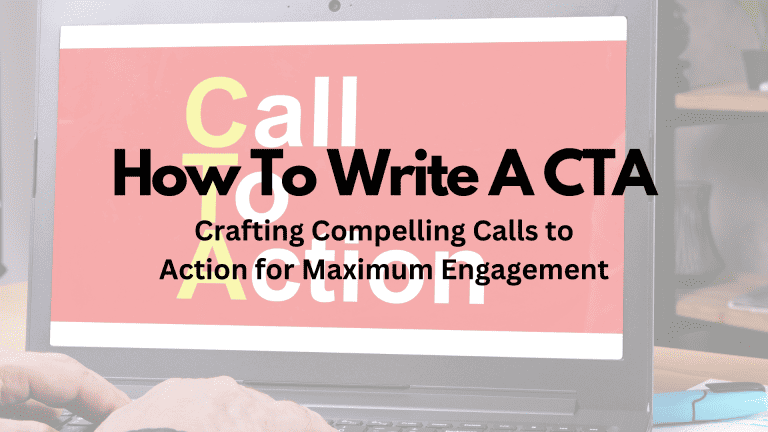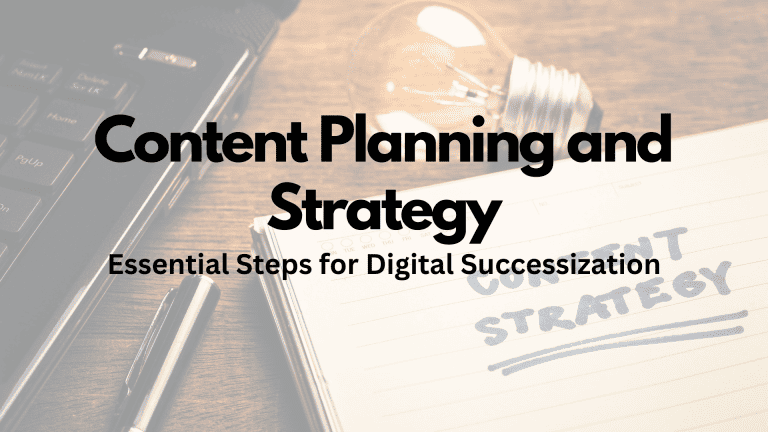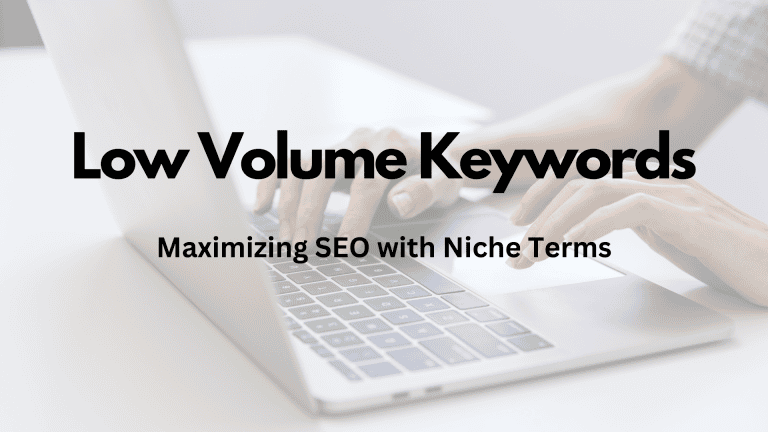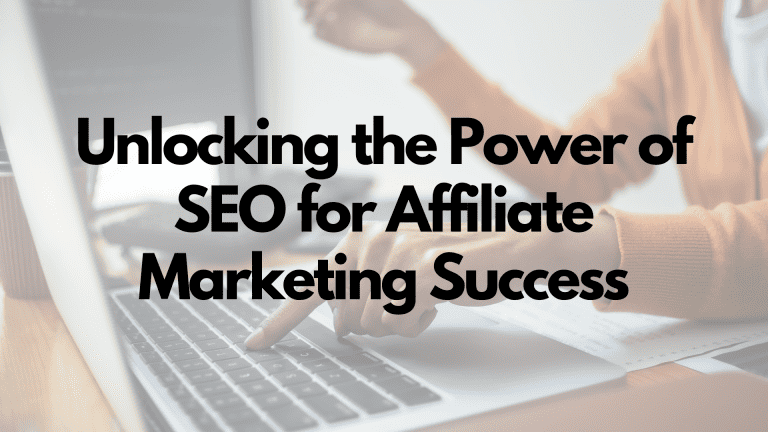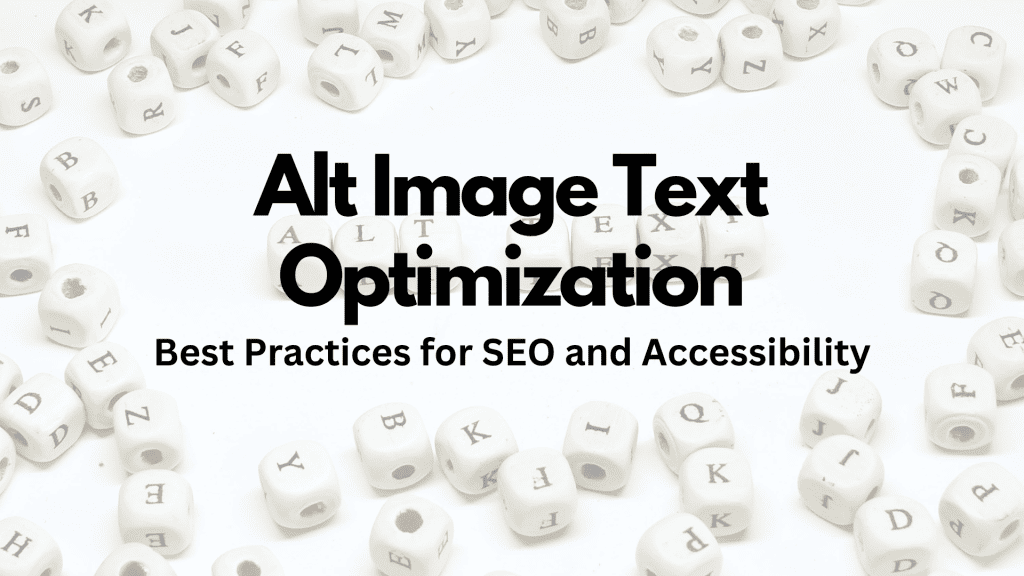
When creating content for the web, incorporating images enhances the user experience and conveys information visually. It's important to remember, however, that not everyone can see these images.
That's where alternative text, commonly referred to as alt image text, becomes crucial. By adding a line of descriptive text to an image, you ensure that all users, including those who use screen readers due to visual impairments, have equivalent access to the information that the image represents.

Alt text also plays a significant role in search engine optimization (SEO). When images have relevant and descriptive alt text, search engines like Google are better able to understand the content of the image, which can contribute to the image's visibility in search results.
Consequently, well-crafted alt text can help your website's overall discoverability, offering an opportunity to improve rankings while simultaneously making your site more accessible.
What Is Alt Image Text

Alt text, short for alternative text, is an attribute added to an image tag in HTML, providing a textual description of the image for scenarios when it cannot be displayed. This text plays a vital role in accessibility, user experience, and driving image traffic.
Accessibility
Alt text is primarily designed to support web accessibility for users with visual impairments. When you incorporate alt text into your images, screen readers can accurately convey the content of an image to users who are blind or have low vision.
It ensures that all users have equitable access to information, aligning with the principles of the Web Content Accessibility Guidelines (WCAG).
User Experience
Not only does alt text benefit those with visual impairments, but it also enhances the overall user experience. During times of slow connection or when an image file cannot be loaded, alt text will display in place of the image. This provides context and keeps users informed about the content they're missing.
Image Traffic
Proper use of alt text can boost your image search rankings, thereby increasing organic traffic to your website.
Search engines utilize the alt attribute to understand and index the content of the image, which helps to serve it in relevant search queries.
Consequently, well-crafted alt text can contribute to a stronger digital presence and drive more traffic to your site.
Why Image Alt Image Text Matters to SEO

Alt image text, or alternative text, plays a crucial role in Search Engine Optimization (SEO). It helps search engines understand the content of an image, contributing to the context of your page.
If you incorporate relevant keywords into your alt text, you can rank higher in both standard and image search results.
- Accessibility: Search engines favour websites that cater to all users, including those with visual impairments. Alt text allows screen readers to describe images, improving accessibility and your site's SEO score.
- Indexing: Without alt text, search engines struggle to properly index your image content. With alt text, your images become searchable, helping search engines index them accurately.
Incorporate alt image text for every image on your site to maximize these SEO benefits.
| Benefit | Description |
|---|---|
| Improved indexing | Helps search engines understand and categorize your content. |
| Enhanced accessibility | Makes your site more inclusive, positively impacting SEO rankings. |
| Increased relevance | Keywords in alt text boost the relevancy of your content to queries. |
| Higher visibility | Contributes to appearing in image search results, driving traffic. |
Image SEO Essentials

Incorporating effective SEO strategies for images is vital for enhancing your website's visibility and user experience. The correct approach can positively influence your content's performance in search engine results.
Proper File Names
When saving images, ensure that your file names are descriptive and relevant to the image's content.
Avoid generic names like “image1.jpg”. Instead, use descriptive keywords that reflect the image subject, such as “fresh-apple-pie.jpg”.
This helps search engines understand the content of the image and improves its SEO value.
Example of a well-structured file name:
- Bad: DSC1001.jpg
- Good: homemade-chocolate-chip-cookies.jpg
High-Quality Images
It's essential to use high-resolution images that are also optimized for the web.
High-quality images enhance user experience, while proper optimization ensures faster loading times, which is a significant factor in SEO performance.
Consider these points for image quality and optimization:
- Resolution: Aim for the best visual quality without compromising website speed.
- Compression: Use tools to compress images, keeping the file size small to improve page load times.
- Balance: Find a balance between image quality and file size for optimal performance.
Be sure to provide alt text for each image, as alt text improves accessibility for users with visual impairments and serves as a contextual clue for search engines.
Alt Image Text Composition Best Practices

Creating effective alt text is crucial for improving accessibility and SEO. Your approach should focus on specificity, relevance, and conciseness to craft an alternative text that enhances user experience and search engine visibility.
Select Right Images for Alt Text
You must select informative and relevant images that contribute to your content because every image you include should have a purpose.
For decorative images that serve no informational purpose, use an empty alt attribute (alt="") to signal to search engines that the image is not critical for understanding the content.
- Informative images: Images that graphically represent concepts and information, requiring descriptive alt text.
- Decorative images: Images used to enhance the design, not meant for content interpretation.
Descriptive Yet Concise Alt Text
When writing alt text:
- Be descriptive: Clearly describe the image's content and context, which may include actions, emotions, colours, or relevant details.
- Keep it concise: Aim for no more than 125 characters, as most screen readers truncate longer text.
Example of descriptive yet concise alt text for an image:
- A pie chart showing 2018 market shares for smartphones: 45% Android, 45% iOS, 10% Other.
Keyword Inclusion Strategies
While keywords enhance your image's discoverability by search engines, they must be integrated naturally:
- Avoid keyword stuffing: Repeating keywords unnecessarily can harm readability and SEO.
- Be contextually relevant: Include keywords directly related to the image and the surrounding text.
Alt Image Text Implementation

When you integrate alt text for images on a website, you ensure that all users, regardless of visual ability, can understand the content that images convey.
Additionally, alt text is vital for image SEO, aiding search engines in comprehending the context and content of images.
In HTML: To add alt text to an image in HTML, you use the alt attribute within the img tag. For example:
<img src="image.jpg" alt="A clear description of the image">
Your description should concisely convey the content of the image. If the image is decorative and not informative, an empty alt attribute (alt="") is appropriate.
In Content Management Systems (CMS): Systems such as WordPress often provide user-friendly interfaces for alt text:
- Upload your image to the media library.
- Click on the image to view its details.
- Locate the “Alt Text” field and enter your description.
Note for CMS users: The exact steps to add alt text can vary; always check the documentation for your specific CMS.
Utilizing HTML for Accessibility

When developing a website, it’s important to ensure that all users, including those with visual impairments, can access its content.
Integrating alt text is a fundamental step to achieve this.
You use the alt attribute within the <img> tag in HTML to provide text equivalents for images. Here's how you can enhance accessibility:
- Visual Content: For every image, input an
altattribute right after the<img>tag. This text should be a descriptive replacement for the image. For example:<img src="picture.jpg" alt="A description of the image"> - Screen Readers: These assistive technologies read aloud the information on a webpage. The
alttext is spoken to the user, so be concise and descriptive. - Form Buttons: If you use images as submit buttons in forms, remember to add an
altattribute. This ensures screen readers can communicate the button's function. Example:<input type="image" src="submit-button.png" alt="Submit">
Guidelines for creating effective alt text:
- Be specific and succinct.
- Do not just use the file name of the image.
- Avoid stating “image of” or “graphic of”; it's redundant since screen readers announce images.
SEO Advantages of Alt Text

Alt image text, or alternative text, is a crucial component in image SEO. By providing descriptive text for images, you enhance the user experience and improve your website's visibility in search engine results.
When images on your site are indexed by search engines like Google, alt image text helps in better understanding the content of those images. It acts as a descriptor, serving two main purposes:
- Accessibility: If an image fails to load, the alt text will display in its place, informing users about the image's content.
- Indexing: Search engines crawl alt text, making it easier to categorize the images, which can contribute to the page's overall SEO performance.
Importance of Relevant Alt Text
- Relevance to Content: Ensure your alt text is pertinent to the surrounding content, as search engines assess relevance.
- Use of Keywords: Including relevant keywords within your alt text can improve rankings for those terms.
Best Practices
- Concise Descriptions: Keep your alt text short and to the point.
- Avoid Keyword Stuffing: Excessive use of keywords can lead to penalties from search engines.
Below is a simple breakdown of the benefits alt text provides:
| Benefit | Description |
|---|---|
| Contextual Information | Adds context to images for search engines, enhancing content relevance. |
| Enhanced Accessibility | Assistive technologies depend on alt text to describe images to users. |
| Anchor Text Alternative | Functions as anchor text for images that are links, aiding in SEO. |
| Improved Search Visibility | Alt text can lead to images appearing in search results, increasing traffic. |
Remember, your alt text should seamlessly integrate with the anchor text and surrounding text. This provides clear input for search engines to ahrefs and aligns your content with SEO strategies aimed at optimizing your online presence.
Strategies to Avoid in Alt Image Text

When creating alt text for images, be mindful of certain practices that can negatively impact both the user experience and your website's SEO.
Keyword Stuffing: Resist the temptation to fill your alt attribute with a list of keywords. Overloading alt text with keywords that are not directly related to the image not only confuses screen readers but also can be penalized by search engines.
Remember:
- Keep it relevant to the image.
- Use a few carefully chosen keywords.
Descriptive Overkill: While details are important, excessively long descriptions may lose interest or confuse the user. Be succinct and describe the image’s content and context that’s relevant to the user’s experience.
What to avoid:
- Long-winded explanations.
- Irrelevant information.
Ignoring the Alt Attribute: Avoid skipping the alt attribute altogether. Alt tags are crucial for accessibility and help users who rely on screen readers understand the content of your images.
Ensure:
- Every image has an appropriate alt tag.
Alt Tags as Placeholder Text: Do not use generic placeholder text (e.g., “image”, “photo”, “graphic”), as it does not provide any useful information. Always aim to describe the image as specifically as possible.
Keep in mind:
- Alt text should be specific to the content and function of the image.
Using Images for Text: Avoid using images to display text whenever possible. Screen readers can't interpret text within an image unless you provide an alt attribute that includes the same words in the image.
In summary:
- If an image contains text, replicate the text in the alt attribute.
Role of Image Alt Image Text in User Experience

When you browse the web, images enrich your experience by providing visual context and aiding in the understanding of content.
Alt text plays a fundamental role, especially for users with visual impairments. It is a concise description of an image, which is crucial when the image is not displayed or cannot be seen by users.
Screen Readers: For individuals who rely on screen readers due to blindness or severe visual impairments, alt image text serves as an auditory substitute for images. It allows you to gain a comprehensive understanding of the webpage's content.
Accessibility: Alt text also supports you if you have low vision by offering a text description which can be magnified or read aloud, ensuring inclusive access to information regardless of visual ability.
- Load Failures: In instances where images fail to load due to slow connections or errors, alt text provides you with a textual indication of the missing visual content.
- SEO Benefits: Besides enhancing user experience, alt text contributes to Search Engine Optimization (SEO) as search engines use the text to understand and rank content, indirectly benefiting your experience by delivering relevant results.
| User Need | Alt Text Functionality |
|---|---|
| Screen reader use | Describes images audibly |
| Low vision | Provides text-based detail |
| Image load failure | Offers content context |
| SEO | Enhances content discoverability |
By employing alt text, web content becomes more accessible and navigable, which is a significant aspect of a positive user experience.
Tools and Processes for Adding Image Alt Text
When you're using content management systems (CMS), such as WordPress, you have built-in options to add alt image text to your images. For a streamlined process, follow these steps:
- Upload Your Image: Within your CMS, click the option to insert an image into your post or page.
- Insert Alt Text: Once the image is uploaded, look for a field labelled ‘Alt Text' or ‘Alternative Text'.
- Describe the Image: Enter a concise description that conveys the same function or purpose as the image.
WordPress Example:
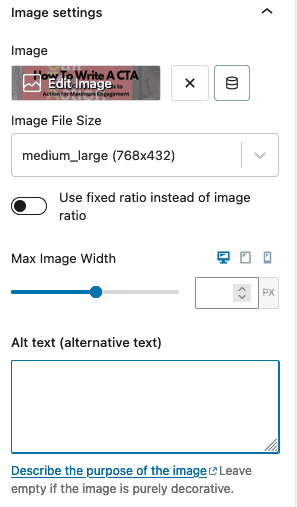
| Action | Location | Input |
|---|---|---|
| Upload | Media Library/Add Media | Select and upload |
| Add alt text | Attachment Details | Enter description |
For images that are part of content like recipes, ensure each alt text describes the step or ingredient depicted. This is beneficial for both SEO and accessibility.
If your website is using lazy loading for images, alt image text must be still provided. Lazy loading defers loading of off-screen images but the alt text ensures content is accessible even if the image hasn't loaded yet.
Remember, your alt text should be clear and concise, focusing on the content and context of the image to improve accessibility and SEO. Use relevant keywords naturally, but don’t overstuff them – keep it simple and accurate.
Conclusion
When crafting alt text for images on your website, following alt image text best practices significantly enhances both accessibility and SEO.
- Consistency is key: Maintain a uniform style across your alt descriptions.
- Be descriptive yet concise: Describe the image purposefully within 125 characters, catering to both screen readers and search engine crawlers.
- Avoid redundancy: Do not repeat information already conveyed in the surrounding text or use phrases like “image of.”
Your SEO benefits from accessible content. Search engines value user experience and accessibility, factoring these into rankings.
- Context matters: Alt text provides clues to the search engine about the topic of your page.
- Keyword integration: While keywords are important, prioritize natural integration over keyword stuffing.
Website enhancement goes beyond just SEO. Users with disabilities rely on alt text to engage with your content.
- Legal compliance: Accessibility standards require alt text for images.
Use the table below as a quick reference for crafting effective alt text:
| Criteria | Description |
|---|---|
| Relevance | Ensure the alt text relates to the image. |
| Brevity | Keep it short and to the point. |
| Description | Accurately describe the image shown. |
| Keywords | Include relevant keywords seamlessly. |
| Non-repetitive | Don't echo the caption or surrounding text. |
Frequently Asked Questions
The Frequently Asked Questions section provides you with targeted insights on creating and using alternative text for images to enhance web accessibility and SEO.
How can I generate effective alt text for an image?
To generate effective alt text, focus on the function and relevance of the image in the context it is used.
Consider what information the image conveys and describe it concisely. If it's a photograph, include details about key elements or actions taking place.
Could you provide an example of descriptive alt text for a visual?
For a visual showing a mountain range at sunset, the alt text could be “Sunset illuminating the snow-capped peaks of the Rocky Mountains, with orange and purple sky in the background.”
What are the best practices for writing alt text for images?
Best practices for writing alt text include being descriptive yet succinct, avoiding phrases like “image of” or “graphic of,” and not exceeding 125 characters, as screen readers may cut off longer text.
In what way does alt text differ from an image description?
Alt text is a concise text replacement for an image on a web page, used by screen readers for accessibility, while an image description is typically more detailed and may accompany scholarly articles, and books, or be used in contexts where detailed visuals are necessary.
What conventions should be followed when adding alt text in HTML?
When adding alt image text in HTML, use the alt attribute within the <img> tag.
Ensure the alt attribute's value is a clear and direct description of the image's content or purpose.
How do you ensure that alt text is both informative and concise?
To ensure alt text is informative and concise, limit it to essential information. Use keywords that reflect the image and context, and avoid redundant or vague language that does not contribute to understanding the image's content.
Share Your Journey, Learn More, and Thrive
I would love to hear about your experiences, challenges, and successes in the realm of affiliate marketing.
Share your thoughts, questions, or stories in the comments section below.
Let's build a community of aspiring and experienced affiliate marketers, supporting one another on this exciting journey.
For more valuable insights, tips, and guidance on affiliate marketing, subscribe to our newsletter.
Stay updated with the latest trends, tools, and strategies that can empower you in your pursuit of affiliate marketing success.

